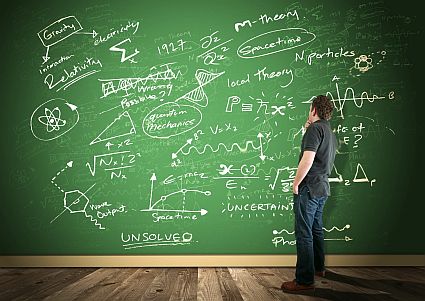I grew in my career establishing myself as a “Problem Solver.” Finding and fixing problems was like a scientific challenge, which matched my training as a theoretical physicist. I proactively sought problems and challenges and worked to solve them.
At first it was as a seller working with my customers. I’d wander the halls of Citicorp and Chase Manhattan bank, talking to people, looking for problems. A better way to do credit card approvals and processing, a better way to do wire transfers and foreign exchange. I made my quotas by finding problems and presenting solutions to my customers
Then I moved into management, I viewed myself as a problem solver for my people. I would identify the problem and solution, jump in and fix it for them. My people were OK with this, kinda-sorta, as long as I fixed the problems they were facing. And when I didn’t, it was my fault.
I kept getting promoted. The senior executives would give me challenged organizations, I would dive in solving the problems. But I was struggling. I started discovering some things.
The problems wouldn’t stay solved when I moved on. I was the only one who knew how to solve them, when I was promoted to another role, the problems would recur and no one on the organization knew how to deal with them.
While I could recognize there may be problems, I was often clueless about solving the problems. I was leading groups of people doing things that I had never done before. I didn’t understand the work they did, how they did it, the challenges they faced.
The problems were bigger than one person. When you are dealing with an organization that has 10s, 100s, 1000s of people involved, no one person could understand the whole problem, no one person could develop and implement the solution. Addressing the problems, solving them meant engaging everyone in developing and implementing the solutions.
Through the years, I was so focused on solving problems, I was totally inattentive to the passive, sometimes overt, resentment of the people I was inflicting my problem solving skills on. That’s why, when I moved on, things would revert to the prior state. None of the people had any ownership of the problem identification, let alone the solution. Too many didn’t understand it. Too many resented it, their views weren’t considered and they were angry.
Imagine the crisis a person, who revels in problem solving, finds himself in when he discovers he is no longer able to solve problems. In fact, he is creating more problems!
It was an excruciatingly painful lesson for me. And my mind immediately went to, “How do I solve this problem?”
I started to realize, in the majority of situations, my job wasn’t to solve the problems! My job was to help people recognize the problems, choose to take action, and figure out how to solve the problems.
I recognized the people doing the work probably know it and the problems better than anyone else. They may not recognize a chance for improvement. They may have been ignored whenever they had ideas for improvement. They may need help in thinking about things differently.
Facilitating their ability to figure things out created magic! They were more engaged, consequently had great ownership. They had better ideas when given the opportunity to develop better ideas. The time to solution was much shorter when they were developing the solution. The ability to sustain the changes became embedded into how they worked in the future.
As I started changing my mindset and approaches, I discovered I was having more fun and involved in helping people and organizations in addressing bigger and more complex challenges. I discovered, that my clients were becoming more successful, valuing how I helped them more than ever before. I discovered, I could address bigger and bigger issues, which expanded the size/types of projects clients want me working with them on.
Reflecting on my experience, I realize too many leaders struggle with the very same issues I have struggled with. We view ourselves as the “problem solvers.” That’s neither our job, nor how we have the greatest impact!
We have to shift our behaviors:
- Our job is to help our people recognize there might be a problem, or an opportunity to change.
- Our job is to give them the opportunity and space to understand and figure things out.
- Our job is to provide resources and tools to help them define and solve the problems.
- Our job is to work with them, helping them think differently, about how to address these issues. Encourage them to experiment.
- Our job is to help them identify what they will do, how they will do it, and the time frame for putting changes and corrections in place.
- Recognize the team might fail, but focus on how they can quickly refocus and recover.
- Our job is to recognize them and celebrate their success as they are putting solutions in place.
- Our job is to ingrain this mindset in the way our people think and operate, empowering them to recognize and address problems as they encounter them.
- In doing this, we create an environment where people can do their best work!
Our job is not to solve the problems, but to help our people recognize, develop, and put in place solutions for their problems.
In discovering this, I rediscovered the joy of helping people solve their problems.
Afterword: Here is the AI generated discussion of this post. As I’m becoming accustomed to, they have a take that is slightly different, but intriguing. Enjoy!

Leave a Reply